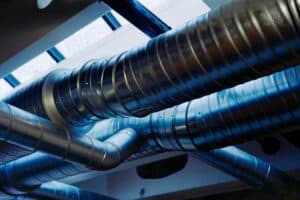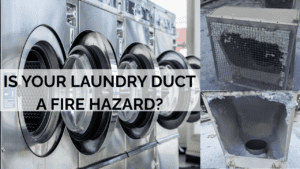As the conversation around air quality becomes more common in the media and everyday life, we take a look at how monitors are used to gather information on indoor air quality and give businesses and individuals the knowledge they need to act and take measures to improve ‘sick buildings’.
What does air quality mean?
Essentially, air quality is the term used to describe how polluted the air we breathe is. When air quality is poor, pollutants in the air may have become hazardous to people, which can impact their health and well being significantly.
Indoor air is made up of several components and disrupting the fine balance by not providing clean air when pollutants are introduced can cause indoor air quality to become poor.
Particles such as mold spores, dust mites, skin cells, dander, pollen, smoke, bacteria and carbon fibres are all present within the air, along with odours such as cooking smells. Volatile organic compounds, such as chemicals from paint and air fresheners, along with gases including CO2 are also part of the make-up of the air we breathe indoors.
Temperature and humidity also significantly impacts the quality of indoor air, from the moisture content to air movement. Indoor air quality is a delicate balance of particles, odours, gases and chemicals, which can be easily disrupted with significant consequences.
How an indoor air quality assessment is completed
We use high-performing sensors and an air hygiene assessment to measure the transmission of airborne pollutants and risks to provide a clear understanding of the air within a building and how that impacts those working or studying in that space.
During our assessment, we use lab testing and undertake a comprehensive audit of any potential hazards within the building. These findings allow us to highlight potential dangers, such as dirty air or viruses, which can spread across the building easily.
Once the assessment is complete, we recommend data-led solutions that aim to increase operational performance, improve energy efficiencies and save on cleaning costs. These solutions can also improve the health and wellbeing of those inside your premises providing long-term cost benefits, by reducing the number of sick days taken and increasing productivity.
What does an indoor air quality monitor report on?
With a number of indoor air quality monitors available from Plasma Clean Air, the information they gather is vital to tackle the indoor air problem within your building. The simple to use monitors provide visibility on a range of components so you can gain control over your space to create a healthy, energy efficient indoor environment.
The monitor dashboard provides an instant view of all of your sensors, room by room, with a tailored view to show you the key data and information you need, reporting on a range of components within the air such as:
- Carbon dioxide
- Humidity
- Temperature
- Particulate matter
- Volatile organic compounds
- Light
- Mould
- Virus risk
- Air pressure
- Noise
- Radon
The benefits of using an indoor air quality monitor
Once you have the data at your fingertips, it won’t be long until you see a range of benefits from your indoor air quality monitoring system.
Positive health and wellbeing
It’s reported that poor indoor air quality can have significant effects on the workforce that are exposed to it over long periods of time. By introducing an indoor air quality monitoring system and acting on the learnings, studies have found a 30% reduction in headaches and respiratory issues along with an increase in performance, cognitive skills and happiness amongst staff.
Reducing sick days
It’s widely understood that the impacts of poor indoor air has a direct link to increased sick days across multiple settings including offices, factories and schools. Protecting your staff by ensuring clean indoor air can lessen the spread of infectious diseases such as Covid-19, flu and Norovirus and reduce the amount of absences across your workforce.
Reducing costs
From a business perspective taking control of your indoor air quality can help to reduce costs long term. With real-time data available at the touch of a button you can plan ahead for staffing and events while reducing the loss of inventory due to contaminated indoor air.
As we’ve seen from the Covid-19 pandemic, infectious viruses that can quickly spread through the air can shut down offices and school settings. With an indoor air quality monitoring system in place, you can future-proof your business against similar situations that are yet to occur.
To find out more about our monitoring and ventilation systems and how we can support your school or business, contact us at [email protected].








